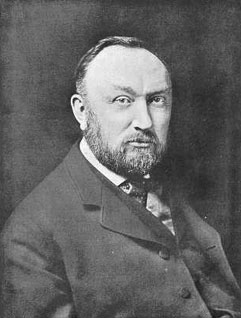| Edward Charles Pickering  Born: 19-Jul-1846 Born: 19-Jul-1846
Birthplace: Boston, MA
Died: 3-Feb-1919
Location of death: Cambridge, MA
Cause of death: unspecified
Gender: Male
Race or Ethnicity: White
Occupation: Astronomer Nationality: United States
Executive summary: Photometer inventor and surveyor American physicist and astronomer, born in Boston on the 19th of July 1846. He graduated in 1865 at the Lawrence Scientific School of Harvard, where for the next two years he was a teacher of mathematics. Subsequently he became professor of physics at the Massachusetts Institute of Technology, and in 1876 he was appointed professor of astronomy and director of the Harvard College observatory. In 1877 he decided to devote one of the telescopes of the observatory to stellar photometry, and after an exhaustive trial of various forms of photometers, he devised the meridian photometer, which seemed to be free from most of the sources of error. With the first instrument of this kind, having objectives of 1.5 inch aperture, he measured the brightness of 4260 stars, including all stars down to the 6th magnitude between the North Pole and -30° declination. With the object of reaching fainter stars, Professor Pickering constructed another instrument of larger dimensions, and with this more than a million observations have been made. The first important work undertaken with it was a revision of the magnitudes given in the Bonn Durchmusterung.
On the completion of this, Professor Pickering decided to undertake the survey of the southern hemisphere. An expedition, under the direction of Prof. S. I. Bailey, was accordingly dispatched (1889), and the meridian photometer erected successively in three different positions on the slopes of the Andes. The third of these was Arequipa, at which a permanent branch of the Harvard Observatory is now located. The magnitudes of nearly 8000 southern stars were determined, including 1428 stars of the 6th magnitude and brighter. The instrument was then returned to Cambridge, Massachusetts, where the survey extended so as to include all stars of magnitude 7.5 down to -40° declination, after which it was once more sent back to Arequipa. In 1886 the widow of Henry Draper, one of the pioneers of stellar spectroscopy, made a liberal provision for carrying on spectroscopic investigations at Harvard College in memory of her husband. With Professor Pickering's usual comprehensiveness, the inquiry was so arranged as to cover the whole sky; and with four telescopes -- two at Cambridge for the northern hemisphere, and two at Arequipa in Peru for the southern -- to which a fine 24-in. photographic telescope was afterwards added, no fewer than 75,000 photographs had been obtained up to the beginning of 1901. These investigations have yielded many important discoveries, not only of new stars, and of large numbers of variable stars, but also of a wholly new class of double stars whose binary character is only revealed by peculiarities in their spectra.
University: Harvard University (1865)
Professor: Physics, Massachusetts Institute of Technology
Professor: Harvard University (1876-)
Royal Astronomical Society Gold Medal 1886 (with Charles Pritchard)
Royal Astronomical Society Gold Medal 1901
Henry Draper Medal 1888
Rumford Prize 1891
Bruce Medal 1908
Author of books:
Elements of Physical Manipulations (1873–76, 2 vols.)
Do you know something we don't?
Submit a correction or make a comment about this profile
Copyright ©2019 Soylent Communications
|